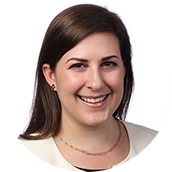SCAD Story Fleshed Out by Clues About Causes, Treatment Risks
More potent DAPT strategies and oral anticoagulation were tied to worse outcomes and should be avoided, researchers say.

Spontaneous coronary artery dissection (SCAD) is likely caused by intramural bleeding, with these patients more likely to have worse cardiovascular outcomes when they’re prescribed more potent antiplatelet therapies and oral anticoagulants, according to new observational data.
Researchers say the findings, which were published online last week in the European Heart Journal with first author Quan Dang, MD (University of Sydney, Australia), could potentially alter clinical practice.
“I would definitely steer away from more potent P2Y12 inhibitors like ticagrelor or prasugrel, and I would use aspirin combined with clopidogrel in my SCAD patients,” senior author Sarah Zaman, MBBS, PhD (University of Sydney, Australia), told TCTMD. “I do think this will be important and referenced in guidelines, even though it’s observational. The problem is we don’t have any other better data to guide management for people with SCAD.”
The results, which are from the Australian-New Zealand SCAD (ANZ-SCAD) registry, confirmed the researchers’ underlying hypothesis about a key cause of SCAD, a condition that primarily affects women, is often misdiagnosed, and requires conservative management.
“It was quite nice that we found that more potent antiplatelets and also oral anticoagulation appeared to be harmful,” said Zaman. “It fits with the underlying pathophysiology of SCAD in that it’s probably more likely to be a bleed, an intramural hematoma, rather than atherothrombosis that you see that commonly causes heart attacks.”
No specific clinical guidelines currently exist for SCAD, but both American and European consensus documents recommend conservative management and advise cautious use of antiplatelet and anticoagulant therapy.
Back in 2021, the 199-patient DISCO registry showed that dual antiplatelet therapy (DAPT) was more commonly used following SCAD than single antiplatelet therapy, and that it was also associated with a signal of harm.
“Our study now adds significantly to that to show that it’s only DAPT with that more potent P2Y12 inhibitor—ticagrelor—that had that harmful association, as opposed to just DAPT in general,” Zaman explained. “In fact, talking to the DISCO study investigators, they found that signal, but they didn’t have the sample size to demonstrate that. So now that we’ve got 505 patients, we have that sample size.”
MACE, Recurrence of SCAD
Using the ANZ-SCAD registry, the researchers included patients who presented with ACS and were confirmed to have SCAD via core lab analysis (mean age 52.2 years; 88.6% female) treated among 23 Australian and New Zealand sites between 2010 and 2024. Notably, 150 patients were recruited prospectively and 355 were enrolled retrospectively, though anatomical features were similar in both groups.
Most patients (88.5%) were managed conservatively, but 10.7% underwent PCI, of whom one-third had complications. Almost all patients (95.7%) were discharged with at least one antiplatelet agent, with 64% receiving DAPT comprised of aspirin plus clopidogrel (31.5%) or ticagrelor (32.3%). Overall, 4.4% of patients were discharged with oral anticoagulation, and this rate was higher for prospectively enrolled patients. Just over one-third of patients were screened for fibromuscular dysplasia, with the condition diagnosed in 30.2%.
After a median follow-up of 21 months, rates of MACE and SCAD recurrence were 8.6% and 3.6%, respectively.
On multivariate analysis, independent predictors of MACE included oral anticoagulation on discharge (HR 3.8; 95% CI 1.6-9.3), DAPT with ticagrelor and aspirin (HR 1.8; 95% CI 1.04-3.2), fibromuscular dysplasia (HR 2.2; 95% CI 1.05-4.5), and previous stroke (HR 3.8; 95% CI 1.2-12.2). Risk of SCAD recurrence was higher among patients with fibromuscular dysplasia (HR 3.9; 95% CI 1.5-26.5), those on DAPT with ticagrelor and aspirin (HR 2.6; 95% CI 2.1-5.3), and those with a history of stroke (HR 6.2; 95% CI 1.8-9.5). DAPT with clopidogrel and aspirin was not associated with higher risks of either MACE or SCAD recurrence.
With so little published research on SCAD, every new study helps, according to Zaman.
“It’s really important that we do have more data on people with SCAD, and I think that the awareness of SCAD in general is fairly low,” she said. “I really just want to promote more knowledge about SCAD; that it has a different underlying pathophysiology [compared] to atherosclerotic MI and, therefore, . . . we shouldn’t just give them the exact same treatment that we give to people with atherosclerotic ACS.”
She is working with a team of international researchers to obtain funding for the first global randomized trial of SCAD that will focus on antiplatelet therapy.
‘Confirmatory’ Findings
Commenting on the study for TCTMD, Fernando Alfonso, MD (Hospital Universitario de La Princesa, Madrid, Spain), who co-authored the European consensus paper on SCAD, said the large sample size and verification of SCAD by core lab are the study’s biggest strengths. The findings were “confirmatory” of past research, validating the hypotheses that SCAD is typically caused by intramural hematoma and also that more potent DAPT is associated with adverse events, he added.
The ongoing randomized BA-SCAD study has just finished enrollment, Alfonso reported, and by assessing the effectiveness of both beta-blockers as well as long and short antiplatelet therapy, its results will build upon these new findings to paint an even clearer picture of how these patients should be treated. Until then, there is not enough evidence to support a change in practice, but Alfonso said he recognizes a “possibility of harm” with using more potent antiplatelet therapy in SCAD patients and will avoid using it.
He also urged clinicians to continue to conservatively manage SCAD patients, noting a high complication rate for those who underwent PCI in this analysis. “Every time we try to enter these fragile and already disrupted vessels, we can cause problems,” he said. “It’s not a normal lesion that you put a stent and the lesion is fixed. No, no, no. If you put a stent, perhaps you can open the lumen, but perhaps you can also cause more trouble.”
The “beauty” of SCAD is that it often heals by itself within a few months, Alfonso continued, so stenting is usually not necessary.
Every new piece of data contributing to the SCAD story is welcome and needed, he concluded, “because we don’t know why it comes and also they have 9% MACE during the first year.” It’s troubling to explain to these patients why they had their MI, said Alfonso. “[We say:] ‘It’s rare. It’s not atherosclerosis.’ They say: ‘Why did this happen to me?’ And I don’t know. The next question is: ‘Can this happen again?’ And we say: ‘Well, hopefully not. But, it can happen.’”
Yael L. Maxwell is Senior Medical Journalist for TCTMD and Section Editor of TCTMD's Fellows Forum. She served as the inaugural…
Read Full BioSources
Dang QM, Psaltis PJ, Burgess S, et al. The Australian-New Zealand spontaneous coronary artery dissection cohort study: predictors of major adverse cardiovascular events and recurrence. Eur Heart J. 2025;Epub ahead of print.
Disclosures
- Zaman, Dang, and Alfonso report no relevant conflicts of interest.





Comments